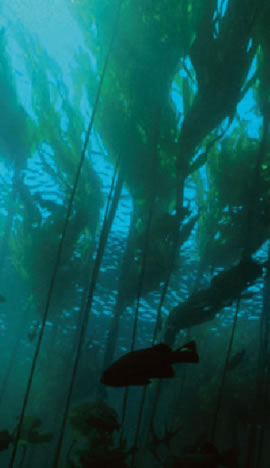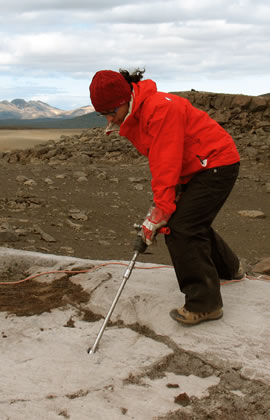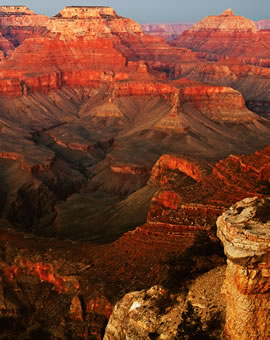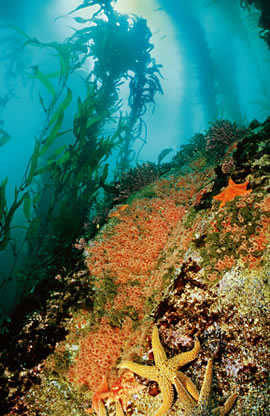Beginner’s Guide to Carbon Offsets
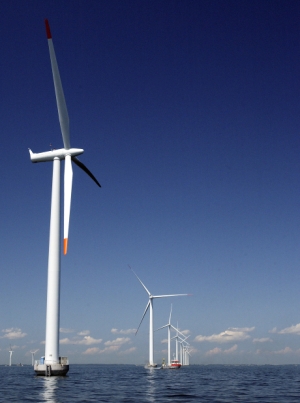
This offshore wind farm in Denmark includes 72 turbines and generates enough clean energy to power 110,000 homes.
|
Sometimes a person, family, company, city, or nation can not reduce the amount of carbon dioxide they release into the atmosphere from burning fossil fuels as much as they wish they could. They may desire to be “carbon neutral” and not add more carbon dioxide to the atmosphere, so they pay someone else to take as much carbon dioxide out of the atmosphere as they put in. For example, a town whose energy comes from a coal burning power plant, a power plant that puts carbon into the atmosphere, may decide to pay an organization thousands of miles away to plant trees in the tropics, trees that take carbon out of the atmosphere. This is called a carbon offset or a carbon credit. Several different types are described below.
Carbon Offsets Used to Plant Trees
Some people offset their carbon emissions by planting trees. There are several different ways that trees are used as carbon offsets. Trees may be planted in an area where trees had not grown before (a process called aforestation) or where trees used to grow but were cut down some time ago (a process called reforestation). Sometimes carbon credits are sold for not cutting existing trees down. For example, some carbon offsets fund programs that get people in developing nations to use more fuel efficient stoves that burn 30-50% less wood. This saves trees, trees that would have been cut down for use in the lower efficiency stoves.
Does planting trees really reduce carbon in the atmosphere? Trees take carbon out of the atmosphere by the process of photosynthesis. Planting trees, lots of trees, has the potential to take 100 Gigatonnes of carbon out of the atmosphere by 2050 according to the 2001 report by the Intergovernmental Panel on Climate Change. That’s a lot of carbon. However, it is only 10-20% of the carbon that is projected to be released into the atmosphere through burning of fossil fuels over the same timeframe.
While all plants do photosynthesis and thus take carbon from the atmosphere, trees are particularly efficient at this, taking up more carbon than grasses, flowers, cacti, and other types of plants. By doing this, trees decrease the amount of greenhouse gases in the atmosphere, and so more trees can have a cooling effect on global climate. However, this carbon-uptake is not the only way that trees affect climate. Forests can also warm the Earth by adding water vapor, another greenhouse gas, to the atmosphere. Plus, forests are dark in color, thus have a low albedo, and absorb solar energy. In high latitudes, forests can cover snow, preventing the snow from reflecting solar energy back out to space. All these complicating factors mean that not all trees are created equal when it comes to their effect on Earth’s climate. Thankfully, scientists have been researching how all these factors work together. They have found that the location of tree planting efforts has an effect on the climate. Tree planting in the humid tropics has a cooling effect on global climate because trees grow faster in the topics and remove, on average, 50 pounds (22 kg) of carbon dioxide from the atmosphere each year. Plus, there is little change to the amount of solar energy absorbed. At mid-latitudes, tree planting has little effect on global climate. At high latitudes, tree planting has been shown to warm climate due to the change in the amount of solar energy absorbed in areas where snow cover used to reflect the energy out to space.
One additional thing to think about: for a carbon offset used to plant trees to remove carbon long term, the tree (or its offspring) must live forever. Carbon sequestered by a tree will be released as carbon dioxide if the tree dies and decays (or is burned).
Carbon Offsets Used for Renewable Energy
Carbon emissions are also offset by building more renewable energy capacity that decreases the need for fossil fuels. Renewable energy sources include all types of energy that do not run out. Some types of renewable energy, including wind energy and solar energy, emit no greenhouse gases to the atmosphere. However, because the Sun is not always shining and the wind is not always blowing, there are limits to the amount of energy that we can "harvest" from solar panels and wind turbines so all of our energy needs can not be met with these types of energy. Other types of renewable energy, such as biofuels, do release greenhouse gases to the atmosphere. Renewable biofuels include ethanol, wood, and biodiesel. They are significantly less carbon neutral that other types of renewable energy because fossil fuels are used to produce them and because burning biofuels does release carbon dioxide and other greenhouse gases. However, if the plant material used to make biofuels is regrown then it will take the same amount of carbon dioxide out of the atmosphere as was put into the atmosphere through the fuel use. Biofuels still cause air pollution, including smog. Biodiesel has a particularly high nitrogen oxide output in some types of diesel engines.
As demand for biofuels increases, there can be unexpected consequences. For example, in 2006 the growing demand for corn-based ethanol, which is used as a biofuel and as an additive for fossil fuels, drove the cost of corn up more than 80%. This may be great if you are a corn farmer. However, if you are one of the millions of people who survive on a diet composed predominantly of corn, you might see a downside. The demand for ethanol has made corn too expensive for tortillas, a staple of the Mexican diet. In early 2007, tens of thousands of people protested the rising cost of tortillas in the streets of Mexico City. Their protest, known as the tortilla riots, prompted President Felipe Calderón to organize price fixes with corn suppliers. It is interesting to note, however, that more corn is used to feed farm animals than is used for ethonol or consumed by people.
The above, written by Lisa Gardiner, was designed for Earth System Science, a Climate Change Perspective, an online course for educators. Please visit NCAR Online Education for more information about this and other courses.







